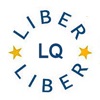Knotworking in Academic Libraries: Two Case Studies from the University of Helsinki
DOI:
https://doi.org/10.18352/lq.8032Keywords:
Knotworking, Change Laboratory, service innovation, research data managementAbstract
Librarians in academic libraries are facing major changes in their work due to, e.g., the internet, digitization, and increasing use of new channels for information retrieval by their most important clients, namely researchers. This creates challenges for librarians: both to deepen their own expertise and to develop innovative service models for their clients. In this paper we present a development project entitled ‘Knotworking in the Library’ from the Helsinki University Library. The project made use of the Change Laboratory method, which is an intensive developmental effort which facilitates improvements in the activities of organizations and changes in the organizational culture. The process started in Viikki Campus Library in 2009–2010 and continued in the City Centre Campus Library in 2010–2011. The aim was to create new kinds of partnership between libraries and research groups in the form of knotworking. By knotworking we mean a boundary-crossing, collective problem-solving way of organizing work. The knotworking model presented in this paper generated practical tools to assist selected research groups in dealing with data management related-issues.Downloads
Download data is not yet available.

Published
2012-04-11
Issue
Section
Articles
License
Copyright (c) 2012 Yrjö Engeström, Heli Kaatrakoski, Pälvi Kaiponen, Johanna Lahikainen, Anne Laitinen, Heli Myllys, Juhana Rantavuori, Kaisa Sinikara

This work is licensed under a Creative Commons Attribution 4.0 International License.
How to Cite
Engeström, Y., Kaatrakoski, H., Kaiponen, P., Lahikainen, J., Laitinen, A., Myllys, H., Rantavuori, J., & Sinikara, K. (2012). Knotworking in Academic Libraries: Two Case Studies from the University of Helsinki. LIBER Quarterly: The Journal of the Association of European Research Libraries, 21(3-4), 387-405. https://doi.org/10.18352/lq.8032





